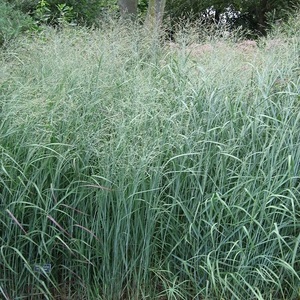Study provides comparison of biomass crop growth in the Midwest

December 26, 2013
BY Chris Hanson
Dennis Pennington, bioenergy educator at Michigan State University Extension, recently reviewed a study on regional biomass feedstocks from the University of Illinois.
Researchers at the Energy Biosciences Institute at the University of Illinois evaluated woody and grassy biomass feedstocks for cellulosic ethanol production at Illinois. Twenty-one species of short-rotation woody biomass were included in the study. The top five performing species were black locust, northern catalpa, flameleaf sumac, silver maple and sycamore. The prairie grasses were from the plot trials planted in spring 2010, which were harvested and measured in both 2011 and 2012. The top performing grassy plants were three various types of switchgrass and Scout Indiangrass.
The study is a valuable piece of work since it is rare to find the multitude of crops represented all conducted at once site at the same time, Pennington said. The study provides an idea of how each crop compares to each other and does not require to obtain data from multiple studies that could have been from different sites, years, weather conditions and management objectives, he added. Furthermore, the findings were applicable to Michigan due to its proximity to Illinois and its similar growing conditions.
Michigan has two distinct regions for growing different types of biomass, Pennington explained. The northern region is characterized by woody biomass and wood-based industries, such as mills and logging, while the southern region has the infrastructure to handle row crop commodities. In terms of cellulosic ethanol crops, it is likely that farmers in southern Michigan will plant mostly warm season, perennial grasses, while northern landowners may choose woody species such as hybrid poplar, willow and sycamore, Pennington added.
Advertisement
Advertisement
In addition to cellulosic ethanol producers, the study could be potentially valuable to farmers. When farmers are asked to produce cellulosic biomass crops, they will seek studies that are well-suited for their particular farm, Pennington said. Data from similar climate and soils will be very valuable to them as we move forward in the growing and supplying biomass, he added.
Advertisement
Advertisement
Related Stories
The USDA significantly increased its estimate for 2025-’26 soybean oil use in biofuel production in its latest World Agricultural Supply and Demand Estimates report, released July 11. The outlook for soybean production was revised down.
U.S. fuel ethanol capacity fell slightly in April, while biodiesel and renewable diesel capacity held steady, according to data released by the U.S. EIA on June 30. Feedstock consumption was down when compared to the previous month.
The U.S. EPA on July 8 hosted virtual public hearing to gather input on the agency’s recently released proposed rule to set 2026 and 2027 RFS RVOs. Members of the biofuel industry were among those to offer testimony during the event.
The USDA’s Risk Management Agency is implementing multiple changes to the Camelina pilot insurance program for the 2026 and succeeding crop years. The changes will expand coverage options and provide greater flexibility for producers.
The USDA’s National Agricultural Statistics Service on June 30 released its annual Acreage report, estimating that 83.4 million acres of soybeans have been planted in the U.S. this year, down 4% when compared to 2024.
Upcoming Events










